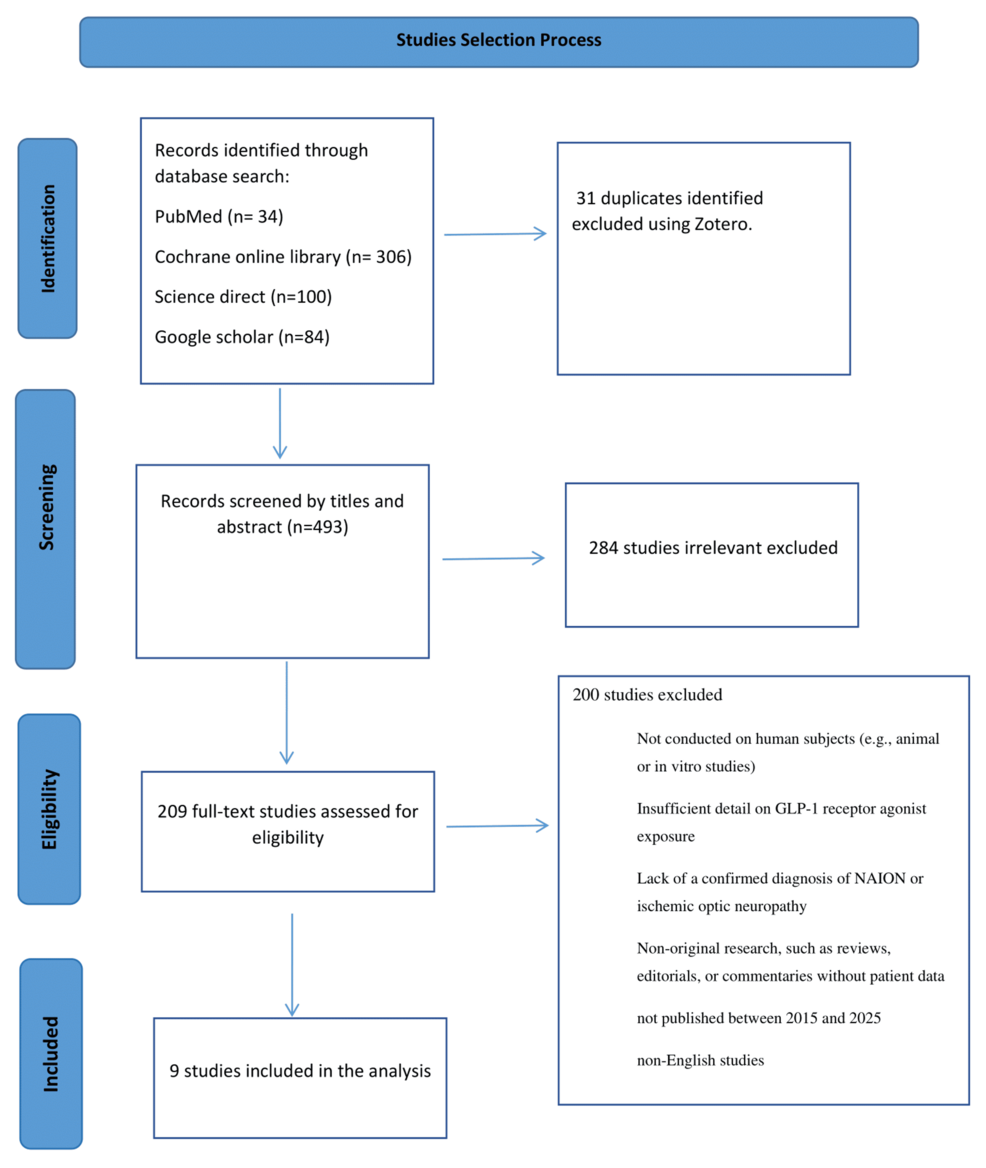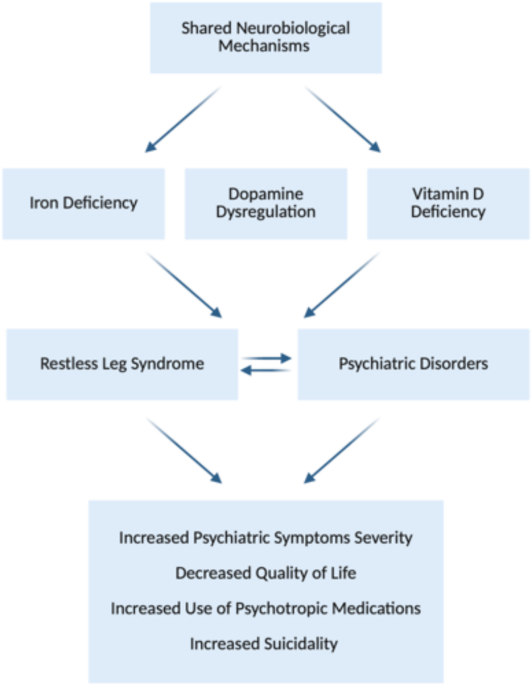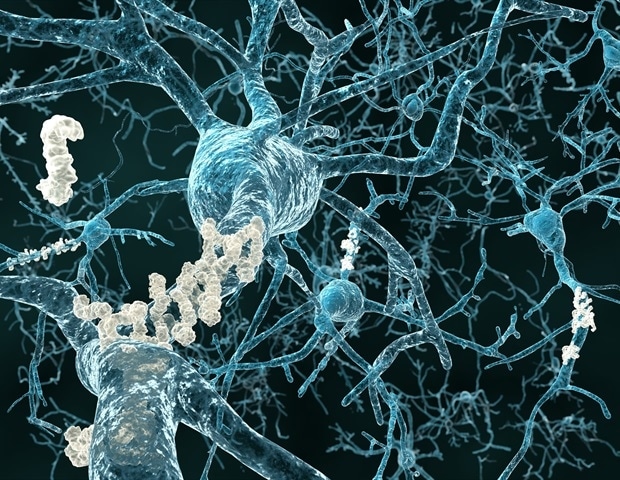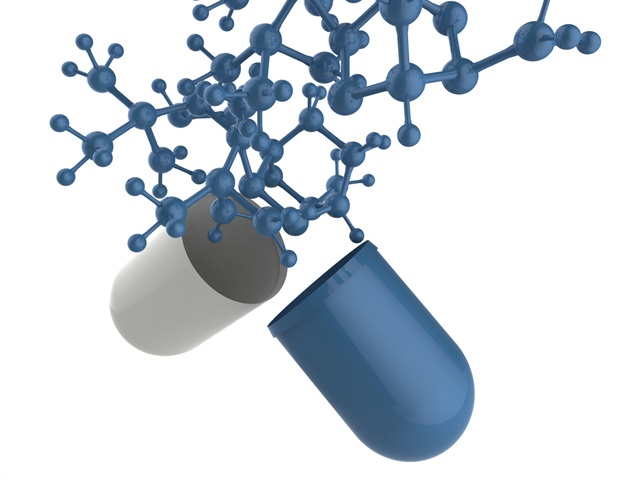
A 60-year-old man in New York was hospitalised after following a strict salt-reduction regimen suggested by ChatGPT. According to doctors, the man abruptly cut sodium from his diet to nearly zero over several weeks, leading to dangerously low sodium levels, a condition known as hyponatraemia. His family said he relied on an AI-generated health plan without consulting a physician. The case, recently published in the American College of Physicians journal, highlights the risks of applying AI health advice without professional oversight, particularly when it involves essential nutrients like sodium. The man recovered after spending three weeks in hospital.
According to the report, the man asked ChatGPT how to eliminate sodium chloride (commonly known as table salt) from his diet. The AI tool suggested sodium bromide as an alternative, a compound once used in early 20th-century medicines but now recognised as toxic in large doses. Acting on this advice, the man purchased sodium bromide online and used it in his cooking for three months.With no previous history of mental or physical illness, the man began experiencing hallucinations, paranoia, and extreme thirst. Upon hospital admission, he displayed confusion and even refused water, fearing contamination. Doctors diagnosed him with bromide toxicity, a condition now almost unheard of but once common when bromide was prescribed for anxiety, insomnia, and other ailments. He also exhibited neurological symptoms, acne-like skin eruptions, and distinctive red spots known as cherry angiomas, all classic signs of bromism.Hospital treatment focused on rehydration and restoring electrolyte balance. Over the course of three weeks, the man’s condition gradually improved, and he was discharged once his sodium and chloride levels returned to normal.
The authors of the case study stressed the growing risk of health misinformation from AI tools. “It is important to consider that ChatGPT and other AI systems can generate scientific inaccuracies, cannot critically discuss results, and ultimately fuel the spread of misinformation,” the report warned.OpenAI, ChatGPT’s developer, explicitly states in its Terms of Use: “You should not rely on Output from our Services as a sole source of truth or factual information, or as a substitute for professional advice.” The terms also clarify that the service is not intended for diagnosing or treating medical conditions.
This case highlights the urgent need for critical thinking when interpreting AI-generated advice, especially in matters involving health. Experts say AI tools can be valuable for general information but should never replace professional consultation. As AI adoption grows, so too does the responsibility to ensure that its outputs are accurate, safe, and clearly understood by the public.

Tokyo, Japan – Researchers from Tokyo Metropolitan University have discovered a new pathway by which cells counteract the action of alovudine, an important antiviral and anticancer drug. The protein flap endonuclease-1 (Fen1) was found to improve cell tolerance by counteracting the toxic accumulation of another protein, 53BP1. A renewed spotlight on the underappreciated role of Fen1 promises not only new cancer treatments, but a way to gauge the efficacy of existing treatments.
Chain-terminating nucleoside analogs (CTNAs) are molecules which closely resemble nucleosides, the building blocks of DNA. They have been used as antiviral and cancer treatments since the 1980s due to their ability to bind to DNA as they are replicated. Since replication rates are abnormally high in infected or cancerous cells, these cells take up more of the drug, suppressing their growth. However, there is much that we don’t know about how healthy cells resist the action of CTNA toxicity, limiting how we put them to good use. For example, alovudine, a CTNA containing fluorine, was envisioned as an HIV treatment, but clinical trials were stopped at phase II due to their toxicity.
A team led by Professor Kouji Hirota of Tokyo Metropolitan University have been looking at the pathways by which healthy cells resist the action of CTNAs. In previous work on alovudine, they had discovered the important role played by breast cancer type I susceptibility protein (BRCA1), a key player in DNA repair. Now, they have turned to the underappreciated role played by flap endonuclease-1 (Fen1), another DNA repair protein responsible for cutting off short, single-stranded DNA sections hanging off a replicating section of DNA known as an Okazaki fragment.
In their experiments with genetically modified chicken DT40 cells, a common model system, the team discovered that suppression of Fen1 made cells extremely susceptible to alovudine toxicity, with replication speeds significantly reduced. Strikingly, they discovered that the further loss of a gene encoding for an entirely different protein led to recovery of alovudine tolerance. Known as 53BP1, this protein is known to collect at nicks in double-stranded DNA. This suggests a mechanism where a lack of Fen1 firstly leads to long overhangs, or “flaps”, being left on replicating DNA. When alovudine is incorporated, the 53BP1 accumulates around the flap, impeding other available mechanisms for cleaving off the overhang, effectively terminating DNA replication.
The team also carried out experiments extending their previous work on BRCA1. At the time, they found that homologous recombination (HR), a key DNA repair pathway involving BRCA1, was significant in their alovudine tolerance. While having either Fen1 or HR suppressed led to lowered resistance, having both led to significantly more suppression. This suggests that the newly found significance of Fen1 is independent of the previous role identified for BRCA1.
A deeper understanding of CTNA tolerance might yield not only promising new treatments but also effect biomarking of cancerous cells which often have a Fen1 deficiency, and a way to ascertain how effective drugs like alovudine might be. The team aims to move to studies in human cells, and work on how such treatments might be applied to different cancerous tissues, such as solid tumors.
This work was supported by JSPS KAKENHI Grants-in-Aid (JP25K02256, JP21K19235, JP20H04337, JP22K15040, and 19KK0210), Tokyo Metropolitan Government Advanced Research Grant Number (R3-[2]), the Takeda Science Foundation, and the Uehara Memorial Foundation.

The Bang Phli District Livestock Office has declared a temporary rabies control zone under the Animal Epidemics Act B.E. 2558 (2015), covering Moo 7, Bang Pla subdistrict, Bang Phli district, Samut Prakan province.
The designated zone is bounded by:
Within this area, rabies is considered an epidemic affecting dogs and cats. The movement of dogs, cats, or their carcasses into, out of, through, or within the zone is strictly prohibited unless written permission is obtained from the responsible district veterinarian.
The order is effective from August 5 to September 4, 2025.


Dr Kunal Sood, an anesthesiology and interventional pain medicine physician, shared an Instagram post on August 6 in which he listed ‘signs you might have insulin resistance’. Insulin resistance is a condition where the body’s cells in the muscles, fat, and liver don’t respond effectively to insulin, leading to high blood sugar levels. This can increase the risk of developing type 2 diabetes and other health complications. Also read | Woman reveals what her body looked like when she had insulin resistance, shares how she reversed it and lost weight
If you’re experiencing the following symptoms, it’s essential to consult with a doctor for proper diagnosis and treatment as they can perform tests like fasting glucose and insulin levels, glucose tolerance tests, and lipid profiles to assess your risk.
According to Dr Sood, here are some potential indicators to watch out for:
“High insulin levels promote fat storage, especially around the abdomen. When cells stop responding well to insulin, the body compensates by producing more of it. This excess insulin signals fat cells, particularly in the abdominal region, to store more energy. Over time, visceral fat builds up, increasing inflammation and the risk of type 2 diabetes and heart disease,” he said.
He added, “Insulin resistance leads to elevated insulin in the bloodstream. High insulin can bind to insulin-like growth factor (IGF-1) receptors on skin cells, stimulating rapid growth and causing thick, velvety patches, typically on the neck, underarms, or groin.”
According to Dr Sood, “Insulin-resistant cells don’t absorb glucose effectively, even when blood sugar is high. This means your cells remain energy-deprived, making you feel sluggish. On top of that, insulin spikes can cause a rapid drop in blood sugar (reactive hypoglycemia), leading to post-meal crashes, irritability, and tiredness.”
He added, “Insulin resistance often causes unstable blood sugar levels. After eating, sharp insulin spikes can cause blood sugar dips, triggering rebound cravings for more sugar or starch to restore energy balance.”
Dr Sood said, “These small, soft growths commonly appear in skin folds. Chronically high insulin acts as a growth factor, promoting excessive cell proliferation in the skin. This is believed to occur through elevated IGF-1 and reduced IGF-binding proteins, which normally help regulate cell growth.”
He concluded, “As blood sugar stays high, the kidneys attempt to flush out the excess by increasing urine production. This causes fluid loss, leading to dehydration. The resulting thirst is the body’s way of trying to restore hydration, but the cycle can continue if high glucose isn’t addressed.”
A 2023 study by the National Institutes of Health found that chronic insufficient sleep can raise insulin resistance in women, particularly postmenopausal women. Click here to know more. In a March 2025 interview with HT lifestyle, Dr Archana Batra explained the link between insulin resistance and belly fat. Click here to know everything she said.
Note to readers: This article is for informational purposes only and not a substitute for professional medical advice. Always seek the advice of your doctor with any questions about a medical condition.

The prevalence of RLS in our sample was found to be 25.4%, significantly higher than the general population prevalence, which typically ranges between 3.9 and 14.3%2.
The prevalence observed aligns with international data; suggesting that psychiatric patients, particularly those with mood and anxiety disorders, are at an increased risk for RLS25. A study by Okan et al. in Turkey showed the same trend with 17.3% prevalence of RLS among their psychiatric outpatient population25. There are some differences in the prevalence rates across studies, with some countries reporting even higher prevalence, particularly in psychiatric inpatient settings. In India, the prevalence of RLS in psychiatric outpatients has been reported as high as 50–67% in patients with depression or anxiety26 while studies in Western populations tend to report lower rates. These discrepancies could reflect variations in diagnostic criteria, population demographics, and differences in lifestyle factors that influence RLS1,2.
While this study is one of the first to investigate RLS in a Lebanese community-based psychiatric sample, prior work from Lebanon reported an 18% RLS prevalence among hospitalized psychiatric patients, underscoring the need for region-specific data19. Dietary patterns common in Lebanon and the broader Middle East, such as lower consumption of bioavailable iron and widespread vitamin D deficiency, may influence both RLS and psychiatric symptomatology27. A study by Wali et al. in Saudi Arabia found a significant association between vitamin D deficiency and RLS27. In the Middle East, vitamin D deficiency is highly prevalent; a 2023 Lebanese exome-wide study identified novel genetic loci associated with low vitamin D levels28. These findings indicate both environmental (diet, sunlight exposure) and genetic predispositions that may heighten RLS risk in Lebanese populations28.
Notably, the majority of our RLS patients were previously undiagnosed, or unaware of the condition which underscores the importance of actively screening for this condition in psychiatric settings where it is often overlooked14,15.
Our study found no significant differences in age, sex, or lifestyle factors between those with and without RLS, which suggests that RLS may not be strongly influenced by these typical risk factors in psychiatric population. Our results showed a trend towards higher prevalence of RLS among females (69.7%), although this did reach statistical significance (p = 0.07). Prior research has consistently reported a female predominance in RLS3. Hormonal fluctuations, especially elevated estrogen, progesterone and prolactin, have been implicated as contributing factors, particularly during pregnancy, the menstrual cycle and menopause3,29. Prior studies have also shown reductions in RLS or periodic limb movements with estrogen-progesterone therapy, suggesting their interactive role30. Nevertheless, the lack of statistical significance may reflect limited power due to modest sample size, which underscores the need for larger sex-stratified studies to identify gender-specific and biological determinants of RLS. Furthermore, the average age of RLS patients in our cohort was 28 years which might have interfered with observing a higher prevalence among women possible perimenopause hormonal changes.
The results did not show a significant difference in age between the two cohorts and while age is an established risk factor for RLS with data showing that older patients are more likely to meet the criteria for RLS1,4. The lack of a significance for two RLS risk factors gender and age, suggests that in psychiatric patients, other factors may have greater influence in this population.
Notably, there was a non-significant trend towards a higher frequency of anemia and blood disorders in the RLS group (p = 0.12). Iron deficiency is a well-established contributor to RLS31,32. When Karl-Axel Ekbom first described RLS there was a high prevalence of iron deficiency among patients33. Iron deficiency has been implicated in both the pathophysiology of RLS and some psychiatric disorders, highlighting the need for diagnostic assessments that include iron levels as part of RLS evaluations34. A recent Cochrane systematic review and meta-analysis by Trotti et al. showed that iron therapy improves restlessness and RLS severity, which further supports the ground of evidence35.
Our results showed a clear association between RLS and psychiatric symptom severity. Patients with RLS scored significantly higher on the PHQ-9 and the GAD-7, indicating more severe depression and anxiety. This finding is consistent with studies reporting a higher prevalence of depression and anxiety in patients with RLS36. Given the cross-sectional nature of our study, we cannot determine the directionality of the observed associations between RLS and psychiatric symptoms. It is possible that RLS contributes to depression and anxiety through mechanisms such as chronic sleep disruption, physical discomfort, and impaired quality of life. Conversely, psychiatric distress, particularly in the context of chronic anxiety or depression, may exacerbate RLS symptoms, either directly through psychophysiological mechanisms or indirectly via medications known to influence dopaminergic pathways (Fig. 1)36. Importantly, emerging evidence supports the hypothesis that both conditions may share common neurobiological substrates. Brain iron deficiency is central to RLS pathophysiology; iron acts as a critical cofactor for tyrosine hydroxylase, the rate-limiting enzyme in dopamine synthesis. Reduced iron availability impairs dopaminergic signaling in the substantia nigra and other basal ganglia regions involved in both motor control and mood regulation. Dopamine dysfunction has also been implicated in depression, anxiety, and sleep regulation, making it a plausible common pathway36. A 2024 meta-analysis by An et al. confirmed elevated depression and anxiety levels in RLS patients across psychiatric populations36. Similarly, Xiao et al. demonstrated that impaired brain iron trafficking is associated with both RLS symptoms and affective disorders in neuroimaging and genetic studies37. These findings underscore the biological plausibility of a shared mechanistic origin and highlight the need for longitudinal and interventional studies to clarify causality and explore whether targeting iron-dopamine pathways can improve outcomes across both clinical domains.
Conceptual model illustrating the bidirectional relationship between RLS and psychiatric disorders, mediated by shared neurobiological mechanisms.
Our results showed a clear association between RLS and psychiatric symptom severity. Patients with RLS scored significantly higher on the PHQ-9 and the GAD-7, indicating more severe depression and anxiety. This finding is consistent with studies reporting a higher prevalence of depression and anxiety in patients with RLS36. RLS severity in our sample was strongly correlated with worse sleep quality as measured by the PSQI, consistent with the established relationship between RLS and poor sleep38. Our data revealed a significant association between RLS and suicidal ideation with RLS patients having markedly higher odds compared to non-RLS patients. This aligns with the findings by Talih et al. who reported that among psychiatric inpatients with suicidal ideation, 21% were found to have RLS (p = 0.01)19. A JAMA study by Zhuang et al. have previously demonstrated an increased risk of suicide and self-harm among RLS patients, independent of lifestyle factors and chronic diseases including depression and sleep disorders39. In other studies RLS patients exhibit increased psychological distress which was associated with suicidality40.
Interestingly, while our study found that RLS patients had significantly poorer sleep, we did not observe statistically significant differences in daytime sleepiness as measured by ESS between the two cohorts after adjusting for potential confounders. This result may be due to the nature of daytime sleepiness, which could be influenced by other factors beyond RLS41. Although RLS is often associated with increased daytime fatigue and sleepiness, our finding suggest that sleep quality, rather than daytime sleepiness, are potentially more relevant for understanding the impact of RLS on somnolence in psychiatric patients.
Our results show a correlation between RLS severity and higher scores on both the PHQ-9 and GAD-7 suggesting a bidirectional relationship between RLS and mood disorders. This correlation has already been established in the literature. One potential explanation is that RLS can exacerbate psychiatric symptoms by disrupting sleep and by causing distressing symptoms, while mood disorders and anxiety and their associated psychotropic medications may worsen RLS symptoms16. Our findings stress the importance of considering RLS as a contributing factor in psychiatric patients with treatment resistant depressive and anxiety symptoms.
We observed that RLS patients in our sample were more likely to be using psychotropic medications and there exists a potential exacerbation of RLS with common psychotropic medications42. Evidence in the literature suggests that while some antidepressants may exacerbate RLS symptoms42. These findings raise the possibility that psychotropic medications may act as confounders in the relationship between RLS and psychiatric symptoms. Many SSRIs and antipsychotics, such as escitalopram, fluoxetine, and quetiapine, have been previously associated with the onset or worsening of RLS symptoms42,43,44. Thus, some of the associations we observed between RLS, and higher PHQ‑9/GAD‑7 scores may partly reflect medication-induced symptom amplification, rather than a direct neurobiological link42. While our study wasn’t powered to parse out causality or dose–response effects, future research should include stratified analyses by medication type and timing, ideally in longitudinal designs, to fully disentangle pharmacologic from disease-related influences.
The study has several limitations that should be acknowledged. First, the cross-sectional design precludes conclusions about causality. While our findings suggest associations between RLS and psychiatric symptoms and their severity, we cannot determine whether RLS exacerbates depression and anxiety, whether psychiatric distress worsens RLS, or whether both are driven by shared neurobiological mechanisms such as iron deficiency, dopaminergic dysregulation, and vitamin D deficiency. Second, our sample primarily included young patients (mean age ~ 28), which may limit generalizability to older psychiatric populations where RLS is more prevalent as per the literature. Lastly, as the study was conducted in Lebanon, contextual factors such as dietary iron intake, vitamin D deficiency, healthcare access, and chronic socioeconomic stress may have influenced the observed prevalence and symptomatology of RLS.

What is the earliest spark that ignites the memory-robbing march of Alzheimer’s disease? Why do some people with Alzheimer’s-like changes in the brain never go on to develop dementia? These questions have bedeviled neuroscientists for decades.
Now, a team of researchers at Harvard Medical School may have found an answer: lithium deficiency in the brain.
The work, published in Nature, shows for the first time that lithium occurs naturally in the brain, shields it from neurodegeneration, and maintains the normal function of all major brain cell types. The findings — 10 years in the making — are based on a series of experiments in mice and on analyses of human brain tissue and blood samples from individuals in various stages of cognitive health.
The scientists found that lithium loss in the human brain is one of the earliest changes leading to Alzheimer’s, while in mice, similar lithium depletion accelerated brain pathology and memory decline. The team further found that reduced lithium levels stemmed from binding to amyloid plaques and impaired uptake in the brain. In a final set of experiments, the team found that a novel lithium compound that avoids capture by amyloid plaques restored memory in mice.
“The idea that lithium deficiency could be a cause of Alzheimer’s disease is new and suggests a different therapeutic approach,” said senior author Bruce Yankner, professor of genetics and neurology in the Blavatnik Institute at HMS, who in the 1990s was the first to demonstrate that amyloid beta is toxic.
The study raises hopes that researchers could one day use lithium to treat the disease in its entirety rather than focusing on a single facet such as amyloid beta or tau, he said.
One of the main discoveries in the study is that as amyloid beta begins to form deposits in the early stages of dementia in both humans and mouse models, it binds to lithium, reducing lithium’s function in the brain. The lower lithium levels affect all major brain cell types and, in mice, give rise to changes recapitulating Alzheimer’s disease, including memory loss.
The authors identified a class of lithium compounds that can evade capture by amyloid beta. Treating mice with the most potent amyloid-evading compound, called lithium orotate, reversed Alzheimer’s disease pathology, prevented brain cell damage, and restored memory.
Although the findings need to be confirmed in humans through clinical trials, they suggest that measuring lithium levels could help screen for early Alzheimer’s. Moreover, the findings point to the importance of testing amyloid-evading lithium compounds for treatment or prevention.
Other lithium compounds are already used to treat bipolar disorder and major depressive disorder, but they are given at much higher concentrations that can be toxic, especially to older people. Yankner’s team found that lithium orotate is effective at one-thousandth that dose — enough to mimic the natural level of lithium in the brain. Mice treated for nearly their entire adult lives showed no evidence of toxicity.
“You have to be careful about extrapolating from mouse models, and you never know until you try it in a controlled human clinical trial,” Yankner said. “But so far the results are very encouraging.”
Yankner became interested in lithium while using it to study the neuroprotective protein REST. Finding out whether lithium is found in the human brain and whether its levels change as neurodegeneration develops and progresses, however, required access to brain tissue, which generally can’t be accessed in living people.
So the lab partnered with the Rush Memory and Aging Project in Chicago, which has a bank of postmortem brain tissue donated by thousands of study participants across the full spectrum of cognitive health and disease.
Having that range was critical because trying to study the brain in the late stages of Alzheimer’s is like looking at a battlefield after a war, said Yankner; there’s a lot of damage and it’s hard to tell how it all started. But in the early stages, “before the brain is badly damaged, you can get important clues,” he said.
Led by first author Liviu Aron, senior research associate in the Yankner Lab, the team used an advanced type of mass spectroscopy to measure trace levels of about 30 different metals in the brain and blood of cognitively healthy people, those in an early stage of dementia called mild cognitive impairment, and those with advanced Alzheimer’s.
Lithium was the only metal that had markedly different levels across groups and changed at the earliest stages of memory loss. Its levels were high in the cognitively healthy donors but greatly diminished in those with mild impairment or full-blown Alzheimer’s.
The team replicated its findings in samples obtained from multiple brain banks nationwide.
The results unify decades-long observations in patients, providing a new theory of the disease and a new strategy for early diagnosis, prevention, and treatment.
Affecting somewhere between 50 million and 400 million people worldwide, Alzheimer’s disease involves an array of brain abnormalities — such as clumps of the protein amyloid beta, neurofibrillary tangles of the protein tau, and loss of a protective protein called REST — but these never explained the full story of the disease. For instance, some people with such abnormalities show no signs of cognitive decline. And recently developed treatments that target amyloid beta typically don’t reverse memory loss and only modestly reduce the rate of decline.
It’s also clear that genetic and environmental factors affect risk of Alzheimer’s, but scientists haven’t figured out why some people with the same risk factors develop the disease while others don’t.
Lithium, the study authors said, may be a critical missing link.
The observation aligned with previous population studies showing that higher lithium levels in the environment, including in drinking water, tracked with lower rates of dementia.
But the new study went beyond by directly observing lithium in the brains of people who hadn’t received lithium as a treatment, establishing a range that constitutes normal levels, and demonstrating that lithium plays an essential role in brain physiology.
“Lithium turns out to be like other nutrients we get from the environment, such as iron and vitamin C,” Yankner said. “It’s the first time anyone’s shown that lithium exists at a natural level that’s biologically meaningful without giving it as a drug.”
Then Yankner and colleagues took things a step further. They demonstrated in mice that lithium depletion isn’t merely linked to Alzheimer’s disease — it helps drive it.
The researchers found that feeding healthy mice a lithium-restricted diet brought their brain lithium levels down to a level similar to that in patients with Alzheimer’s disease. This appeared to accelerate the aging process, giving rise to brain inflammation, loss of synaptic connections between neurons, and cognitive decline.
In Alzheimer’s mouse models, depleted lithium dramatically accelerated the formation of amyloid-beta plaques and structures that resemble neurofibrillary tangles. Lithium depletion also activated inflammatory cells in the brain called microglia, impairing their ability to degrade amyloid; caused the loss of synapses, axons, and neuron-protecting myelin; and accelerated cognitive decline and memory loss — all hallmarks of Alzheimer’s disease.
The mouse experiments further revealed that lithium altered the activity of genes known to raise or lower risk of Alzheimer’s, including the most well-known, APOE.
Replenishing lithium by giving the mice lithium orotate in their water reversed the disease-related damage and restored memory function, even in older mice with advanced disease. Notably, maintaining stable lithium levels in early life prevented Alzheimer’s onset — a finding that confirmed that lithium fuels the disease process.
“What impresses me the most about lithium is the widespread effect it has on the various manifestations of Alzheimer’s. I really have not seen anything quite like it all my years of working on this disease,” said Yankner.
A few limited clinical trials of lithium for Alzheimer’s disease have shown some efficacy, but the lithium compounds they used — such as the clinical standard, lithium carbonate — can be toxic to aging people at the high doses normally used in the clinic.
The new research explains why: Amyloid beta was sequestering these other lithium compounds before they could work. Yankner and colleagues found lithium orotate by developing a screening platform that searches a library of compounds for those that might bypass amyloid beta. Other researchers can now use the platform to seek additional amyloid-evading lithium compounds that might be even more effective.
“One of the most galvanizing findings for us was that there were profound effects at this exquisitely low dose,” Yankner said.
If replicated in further studies, the researchers say lithium screening through routine blood tests may one day offer a way to identify individuals at risk for Alzheimer’s who would benefit from treatment to prevent or delay disease onset.
Studying lithium levels in people who are resistant to Alzheimer’s as they age might help scientists establish a target level that they could help patients maintain to prevent onset of the disease, Yankner said.
Since lithium has not yet been shown to be safe or effective in protecting against neurodegeneration in humans, Yankner emphasizes that people should not take lithium compounds on their own. But he expressed cautious optimism that lithium orotate or a similar compound will move forward into clinical trials in the near future and could ultimately change the story of Alzheimer’s treatment.
“My hope is that lithium will do something more fundamental than anti-amyloid or anti-tau therapies, not just lessening but reversing cognitive decline and improving patients’ lives,” he said.
Source:
Journal reference:
Aron, L., et al. (2025). Lithium deficiency and the onset of Alzheimer’s disease. Nature. doi.org/10.1038/s41586-025-09335-x.

One-third of people older than 85 in the United States are estimated to live with Alzheimer’s disease today, according to the National Institute on Aging. The condition’s characteristic long, slow decline places an enormous burden on families and on society. While the need for new treatments is urgent, Alzheimer’s is a complex disease that requires multidisciplinary research across a wide range of specialties.
In a new article led by Yale’s Amy Arnsten, researchers from across numerous disciplines share an update on the varied efforts that are driving these new treatments.
Writing in the journal Alzheimer’s & Dementia: The Journal of the Alzheimer’s Association, the group of experts – whose fields span neuropathology, fluid biomarkers, PET imaging, and proteomics/transcriptomics, as well as basic research – focus specifically on the early stages of the disease when new preventive therapies may be most effective.
This integrated view highlights that Alzheimer’s pathology can be initiated by many different factors, including protein buildups in the brain and inflammation that appear to drive neurodegeneration in the common, late-onset form of the disease, said Arnsten, the Albert E. Kent Professor of Neuroscience at Yale School of Medicine (YSM) and professor of psychology in Yale’s Faculty of Arts and Sciences.
“We’re at a tipping point in Alzheimer’s research today where we have begun to have the first treatments for the disease, but we still have a long way to go,” Arnsten said. “We need to keep pushing ahead to have more effective medications with fewer side effects.”
In an interview, Arnsten explains why so many more people are expected to develop Alzheimer’s in the coming decades, the opportunities for new treatments, and challenges that threaten to halt this progress.
In addition to Arnsten, the Albert E. Kent Professor of Neuroscience at Yale School of Medicine (YSM) and professor of psychology in Yale’s Faculty of Arts and Sciences, contributors include Christopher H. van Dyck, the Elizabeth Mears and House Jameson Professor of Psychiatry and of neurology and neuroscience at YSM, Dibyadeep Datta, assistant professor of psychiatry and of neuroscience at YSM, as well as Heiko Braak and Kelly Del Tredici from the University of Ulm in Germany; Nicolas Barthelemy from Washington University in St Louis; and Edward Lein and Mariano Gabitto from the Allen Institute for Brain Sciences and the University of Washington.
The interview has been edited for length and clarity.
What is the state of Alzheimer’s disease research today?
Amy Arnsten: Alzheimer’s research has expanded tremendously over the last decade, and we are now at an extraordinary time. After decades of research, the lessons we’ve learned about the brain changes that cause the disease are beginning to translate into FDA-approved treatments.
There are currently two approved antibody treatments that remove beta amyloid, one of the hallmarks of Alzheimer’s disease, from the brain, and slow the course of the disease. But they don’t stop it, and they don’t work for everyone. They can also have some pretty serious side effects.
Why is dementia so prevalent now?
Arnsten: Aging is the greatest risk factor for Alzheimer’s disease, and people are living so much longer, especially now with many effective treatments for diseases like cancer. Aging is also a risk factor for other causes of dementia, such as vascular dementia, and dementia related to Parkinson’s disease. Sometimes the forms overlap, which is particularly confusing for neuropathologists. These diseases place an enormous burden on patients and on their families.
What is new research focusing on?
Arnsten: There are many new approaches in the pipeline. Early intervention is one big priority. We need effective treatments with benign side effects so we can catch the disease early – maybe even before people start showing symptoms – and slow it down. My lab is researching the toxic actions caused by inflammation that contribute to Alzheimer’s. The goal would be to have a treatment you could use very early – once the test indicates risk even if the patient has no symptoms – that is also remarkably safe. You want to be able to use this with a patient who is, say, 50 years old, because the process can start when you’re still young.
Why does it take so long for discoveries in the lab to become medications people can take?
Arnsten: In many ways, Alzheimer’s researchers have had to invent the field, and innovations from disciplines such as genetics, cell biology, neuroscience, spectroscopy, and brain imaging have all been necessary to figure out what was changing in the brain and why. There appear to be multiple drivers of brain pathology, for example, where inflammation may contribute greater risk in some people than in others, which makes things more complex. But it also offers more opportunities for different kinds of treatments.
This type of translational science is necessarily slow, as it takes time to unravel the many factors that initiate and drive the pathology. And once you have discerned a possible therapeutic target, it takes great time and expense to determine that a treatment is effective and safe in patients.
What are some of the more notable new breakthroughs in the field?
Arnsten: One key recent breakthrough is a new blood biomarker that can detect the beginnings of tau pathology [accumulation of the tau protein in the brain], which is a hallmark of Alzheimer’s disease. This signal of emerging pathology in the brain can be seen long before one can use PET imaging to see later stage tau pathology in the brain. This new blood biomarker will also allow us to track whether a new treatment is working.
There are many new, and likely better, treatment strategies also in early stages of testing that will likely not come to fruition if Congress cuts the NIH [National Institutes of Health] budget. This would be a tragedy for so many patients and their families, and would also be very short-sighted, as the financial burden of caring for patients by the federal government is enormous.
In my lab, we’ve worked for 20 years to understand some of the early changes that especially afflict the neurons that generate memory and higher cognition, and we have identified a compound that we think can stop these early, toxic effects of inflammation with few side effects. But now, due to NIH budget cuts, we can’t get the funding to continue. These cuts will be devastating to so much research, and the field can’t just bounce back from them, because they will destroy so much of the research pipeline, hurting our health and also the U.S. economy. In the past, Congress understood the importance of NIH-funded research to American strength; we hope that rational strategies can still prevail.
Source:
Journal reference:
Arnsten, A. F. T., et al. (2025). An integrated view of the relationships between amyloid, tau, and inflammatory pathophysiology in Alzheimer’s disease. Alzheimer S & Dementia. doi.org/10.1002/alz.70404.

Copper has emerged as an ally in the battle against antibiotic-resistant bacteria. Copper sulfate liquids, for example, have been used since the 1700s to control fungal infections in vineyards, orchards and many other kinds of agricultural settings. Copper surfaces are now often used in health care to help keep facilities sterile. But too much of a good thing can create the very problem it’s trying to solve.
According to new research published in Evolution, Medicine and Public Health, UCLA microbiologists have found that heavy use of copper antimicrobials can also drive antibiotic resistance in bacteria. However, resistance quickly diminishes without copper exposure, suggesting that copper could help reduce antibiotic resistance if alternated with other measures.
“Some published research shows that switching to copper doesn’t necessarily solve the antibiotic resistance problem. We wanted to know what would happen to bacteria in environments where the heavy use of copper, such as copper-based pesticides and fungicides in agriculture, would place evolutionary pressure on bacteria over time,” said first author Sada Boyd-Vorsah, who led the research as a postdoctoral researcher at UCLA. “We found that bacteria that evolve resistance to copper also become resistant to antibiotics, possibly because they are using biological pathways that help them resist copper to also resist antibiotics.”
Strains of bacteria that cannot be killed by antibiotics pose a serious threat to medicine’s ability to treat infectious diseases. Resistant strains emerge because a few individuals in a bacterial population inevitably survive a strong course of antibiotics and pass on to subsequent generations the traits that helped them stay alive. This process, which biologists call natural selection, ensures that traits that help individuals survive and reproduce will become common enough that the population can persist in the face of pressure from the environment.
Like antibiotics, anything used to kill microbes, which are organisms like bacteria, viruses, yeasts and fungi, can create a hostile environment that drives resistance. This can include chemicals, metals, extreme heat and cold.
“In previous research, our lab showed that the pathway that helps bacteria deal with a very ancient stressor, which is extreme temperature, could be the pathway with which they deal with antibiotics,” said corresponding author Pamela Yeh, who is a UCLA professor of ecology and evolutionary biology. “Because this pathway evolved long ago, it is probably common to many types of bacteria.”
The team grew colonies of E. coli bacteria in petri dishes and exposed them to copper sulfate, which is a common disinfectant and fungicide. Only 8 of the original 50 populations survived, and subsequent generations were grown from these and exposed again to copper to develop copper-resistant populations. Next, they tested the copper-resistant bacteria with a variety of common antibiotics and found that they also resisted the antibiotics.
Genetic analysis showed that copper-resistant bacteria had evolved 477 genetic mutations that were not found in control populations. Some of these mutations were, not surprisingly, on genes associated with metal resistance, but not antibiotic resistance. The result backs up the Yeh Lab’s previous finding that bacteria use the same pathways to cope with multiple stressors and indicates that antibiotic resistance can be driven by environmental pressures other than antibiotics alone.
“Even though copper antimicrobials are becoming more common, copper-resistant bacteria are not yet common. But it’s useful to know that if they become resistant to copper, they will likely also be resistant to antibiotics. Copper is still a great antimicrobial, but (we) just need to be mindful (of) how we use it, because we don’t want to end up with a similar situation to the one we have now,” said Boyd-Vorsah, who is now a visiting assistant professor at Winston-Salem State University.
To the researchers’ surprise, however, bacteria began to lose their resistance after just seven days without copper exposure. In some populations, resistance fell but still remained high, while in others it fell to baseline levels, showing that there was a certain amount of genetic variability between the resistant populations.
By alternating the use of copper with other antimicrobials, it should be possible to use them to control microbes without driving resistance, researchers said. Although the research was done in E. coli, the researchers said the finding likely applies to many other kinds of bacteria.
“I don’t see any reason why we wouldn’t expect that this is probably a generalizable pattern that could be found across many, maybe even all, species of bacteria because the mechanisms that confer resistance are probably evolutionarily very ancient,” Yeh said.
Source:
University of California – Los Angeles
Journal reference:
Boyd-Vorsah, S., et al. (2025). Survival, Resistance, and Fitness Dynamics of Escherichia coli Populations After Prolonged Exposure to Copper. Evolution Medicine and Public Health. doi.org/10.1093/emph/eoaf015.